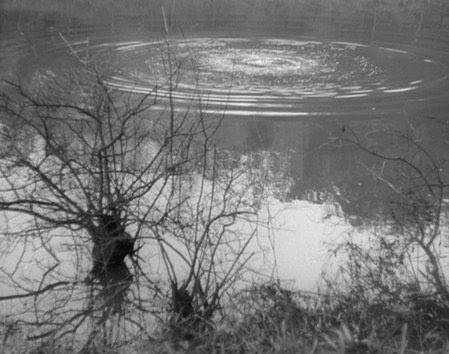
“Without mercy, man is not a human being”: Sympathy and Suffering in Sansho the Bailiff
Released in 1954, Sansho Dayu or Sansho the Bailiff is considered a masterpiece by Kenji Mizoguchi, not just because of its huge cast, its strict adherence to compositional rules of classic cinema, its elaborate sets, or intricately choreographed long takes. What draws film buffs to this film is a 20-year family history compressed into a two-hour long story about conflicts that are as timeless as mankind itself. Conflicts between — selflessness and the urge for self-preservation, civilised behaviour and bestial greed, idealism and realism — take the centre stage in Mizoguchi’s 81st film. One need not draw contemporary political references to explain why the film feels transcendental to this date, but it might be useful to understand why it remains relatable decades after it was first released.
The films opens on a hillside, where Tamaki, the wife of a virtuous governor is making her way through a difficult terrain along with her son, Zushio, her young daughter, Anju and a servant. Set in eleventh-century (Heian period) Japan, Sansho the Bailiff tells the tale of this family making their way to the patriarch, who has been banished by the eponymous slavemaster Sansho, for being kind to revolting peasants in his district. Before his exile, the governor imparts to his son the central motif of the film, “Without mercy, man is not a human being. Even if you are hard on yourself, be merciful to others.”

A young Zushio with his father
They halt for the night, build a shelter out of grass/ tree limbs and sit around a fire. While waiting for the servant to return with hot porridge from a house nearby, an old priestess chances by their little circle and offers them shelter for the night. In the morning, after discovering their destination, the priestess recommends they travel safely by water and leads them to “friendly” boatmen. The seemingly trustworthy priestess hands her guests over to mercenary boatmen, who will sell the mother to prostitution and the children into slavery under Sansho, who is the richest man in the district.
Sansho, runs a prison camp that the children’s father in his power as the governor, had attempted to dismantle before being banished. He is a wicked man, who causes prisoners to be branded on their forehead if they try to escape. It is here that the children will spend the next ten years of their life, working for a sadistic tyrant who is the antithesis of all that their father stood for. Many have wondered why Sansho the Bailiff was named after the antagonist, who appears in less than half the film’s running time, though it soon becomes obvious that the slavemaster is meant to indicate the arbitrary unfairness of life.

Sansho the Bailiff
All the scenes in the prison camp are unsparing in their depiction of human grief and trauma. It is here that the film develops a spectrum of characterisation, with Sansho on one end depicting all that’s wrong with the world and on the other end is the sister, Anju, who remains hopeful and compassionate despite facing uncountable horrors. In the middle sits, Zushio, who upon hitting puberty becomes (temporarily) corrupted by his surroundings. He begins to engage with the cruel disciplinary methods employed by the bailiff; often holding down panic-stricken slaves and branding their foreheads with a nonchalant look on his face.
As the plot moves forward, we see the siblings being motivated to escape from the prison camp. They are driven by a song with a haunting refrain, sung to them by a prisoner in their mother’s voice, “Zushio, Anju, come back, I need you.”

Tamaki calling out to her children across the ocean.
Mizoguchi, who along with Yasujiro Ozu and Akira Kurosawa, is considered one of Japan’s greatest directors was known for making genre-defying films. But his pioneering films — “Sansho”, “Song of Oharu,” (1952) and “Ugetsu Monogatari” (1953), for which he won the Silver Lion, the grand prize, three years in a row at the Venice Film Festival, have a central and abiding theme; the historical condition of women in Japanese society.
His long-time frequent collaborator, Kazuo Miyagawa, (who worked as a cinematographer on Rashomon and Yojimbo) is known for his theory of “one shot, one scene.” The depth of such an economical and meditative type of storytelling is apparent in a scene, where the death of character by drowning is not directly shown, but indicated through the ripples on the surface of a lake. The camera is often a reluctant observer; it doesn’t move in most scenes and declines to notice certain gruesome actions.

A prefatory note in the title sequence reminds the viewers that the story takes place, in “an era when mankind had not yet awakened as human beings.” The original story was written in 1915, but it is still a searing indictment of nationalist militarism, and the inherent inequity present in ancient class systems. If observed through a political lens, the film expounds egalitarian values, which liberalism promotes. But a deeper analysis would reveal that Sansho is a religious film; it seeks to show viewers that message of compassion practised by Buddha is compatible with liberalism.

The bittersweet ending of the film cannot be described in words. It is both low-key and high-pitched, as well as dramatic and meditative. Anthony Lane, the film critic for The New Yorker, did a profile of Mizoguchi a few years ago in which he wrote: “I have seen ‘Sansho’ only once, a decade ago, emerging from the cinema a broken man but calm in my conviction that I had never seen anything better; I have not dared watch it again, reluctant to ruin the spell, but also because the human heart was not designed to weather such an ordeal.”